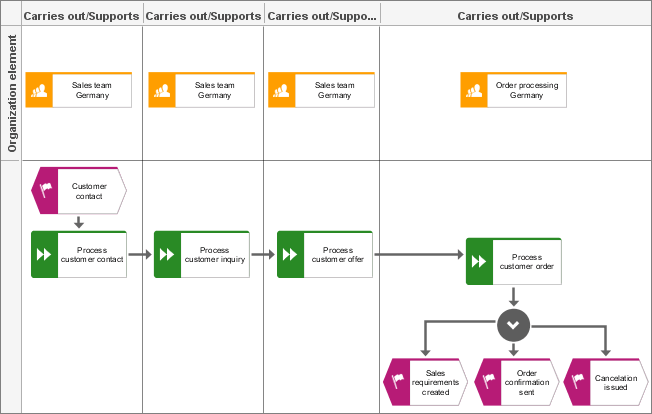EPC (column/row display)
The following description also applies to the EPC (row display).
Most of the explanations on the EPC also apply to the EPC (column display) model type, except that all symbols in this model are distributed over various columns. The advantage is that this representation makes the EPC much easier to interpret. Organizational elements and application systems are placed in the diagram header. All other symbols are placed in the second row of each column.
A particular characteristic of all lane models (that is, models that are modeled in columns and/or rows) is the automatic creation of invisible (implicit) relationships. For example, when you model application systems and functions, the implicit relationship 'supports' is automatically created in the default columns of the EPC (column display). Organizational elements and functions are implicitly connected by a 'carries out' relationship. The user may also add the following columns named after the implicit relationships:

Contributes to

Decides on

Is IT responsible for

Is technically responsible for

Must be informed on cancellation

Must inform about result of

Must be informed about

Accepts

Has consulting role in
The following figure shows an example of an EPC (column display).
The difference between the EPC (column display) and the EPC (row display) lies in the modeling direction. In the EPC (column display) modeling is performed from top to bottom, in the EPC (row display) from left to right.
